How to deal with white rot on cucumbers, onions, carrots, cabbage, grapes and other crops
Sclerotiniasis is a dangerous disease known as white rot. It can harm more than 500 species of dicotyledonous plants throughout Russia and far beyond its borders. The omnivorousness and vitality of fungi, pathogens of the disease, farmers can oppose careful control and prevention of the spread, a constant struggle for the health of cultivated crops. Knowledge of the life cycle, favorable conditions for the development of organisms parasitizing on higher plants is a serious weapon in this struggle.
Sclerotia. Life cycle features
The causative agent of white rot is a representative of marsupial fungi (ascomycetes) - sclerotinia (Latin Sclerotinia).
Plants are infected in autumn, when all living things are preparing for wintering. Parasitic fungi introduced to the site form solid round or oblong bodies of black color - sclerotia. In this state, they are waiting for a favorable period for a new cycle of development. Sclerotia overwintered in the tissues of a higher plant will wake up from the heat and abundance of melt moisture in spring and begin to grow.
Sclerotia that have not been cultivated overwinter in the upper soil layer. By deep plowing the soil before winter, farmers get rid of many wintering pests, but it will not be possible to cope with the causative agent of white rot in this way. At a depth of 30 cm, sclerotia will wait for the onset of a favorable period. During the next plowing, they will be brought to the surface, and a layer up to 5 cm is ideal conditions for starting a new cycle.
If dormant myceliums can gain access to the roots of higher plants, they will begin to parasitize underground. The viability of mummified spores is more than 10 years. Therefore, no one can give guarantees that there is no source of sclerotinosis on the site.
Sclerotia will not survive in flooded soil - on clay soils, which are regularly flooded in spring, the causative agent of white rot dies.
In the spring, spores that have sprouted in plant tissues destroy the stems, leaves, and then move to the fruits. By the middle of summer, the mycelium, having reached its peak of development, becomes dense and begins to form new sclerotia for subsequent reproduction.
Until the time, the disputes are stored in bags (asks). The wind picks up the ripe and ready for wintering sclerotia when they fall out of their bags. This is how the pathogenic fungus, the causative agent of white rot, spreads.
Symptoms and course of the disease
Like all rot, sclerotinosis actively develops in conditions of high humidity. White rot prefers a low temperature - + 13-15 ° С. A favorable factor for an outbreak of the disease is sharp temperature changes. Plants under such conditions experience stress.
A crop that meets agrotechnical requirements has a sufficient level of immunity to resist disease in adverse conditions. But if the plant is weakened, it has no chance to fight white rot on its own.
In different cultures, the disease manifests itself in its own way, but there are general signs of sclerotinosis:
- white discharge with a smell appears on the stems, leaves, berries, fruits, the tissues soften, become slimy;
- the roots are covered with whitish mucus, the top of the plant withers;
- on the cut of the stem at this stage, it is already possible to distinguish formed sclerotia in the cotton plaque.
Having recognized the disease in fruit and berry and ornamental crops in time, the farmer can stop its spread.
Vegetables in greenhouses or greenhouses
The parasite fungus enters an enclosed space with contaminated soil and tools that have not been treated with disinfectants. If the summer turned out to be cool, favorable conditions are created for sclerotinia under glass or film, because crops that require a special microclimate - a stable temperature and humidity - are grown in indoor conditions.
On tomato bushes during the development of the plant, the ripening of the fruits, white rot rarely appears for two reasons:
- planting tomatoes are regularly ventilated;
- the formation of bushes and the removal of the lower leaves eliminates their thickening.
But during the ripening and storage of the harvested fruits, the peel of which has burst, a slippery whitish coating forms in the cracks, the pulp begins to rot. Such vegetables need to be destroyed urgently.
The most important condition for growing cucumbers is high humidity, so greenhouses with this culture are not ventilated. White rot affects plants at any stage - from germination to harvest. Too dense plantings provoke the rapid spread of the parasitic fungus on cucumbers. Stems, leaves, fruits - all parts are affected by white rot.
At the first symptoms of infection on cucumbers in a greenhouse, they act like this:
- the diseased bush is completely removed;
- start treating the rest.
Open field crops
White rot affects almost all garden plants. Since crop contamination usually occurs towards the end of the summer cottage season, it is not always possible to recognize the infection in time.
After harvesting cabbage, carrots, onions, garlic affected by white rot in a cold rainy summer, there are obvious signs:
- cotton bloom,
- softening of tissues,
- slime,
- balls of sclerotia.
Most often, all these manifestations are found after a while - in a vegetable store, where all conditions are created for the mushroom. From infected fruits, spores quickly move to healthy ones - all blanks are under the threat of destruction by a parasitic fungus.
Sunflower crops can die from white rot at any stage.
- Sclerotinia also attacks the culture in the phase of cotyledon opening - the plant dies before it gets stronger.
- A fungal infection can also manifest itself during the formation of the basket.
Sunflower infection occurs not only through the infected soil, but also with the planting material. Sclerotia are often found among the seeds; the seeds are often already infected with spores.
White rot in the garden
Fruit trees and shrubs are susceptible to fungal infections, including white rot:
- Fungal spores get under the bark through mechanical damage to the trunk, shoots.
- A fruiting body is formed at the site of the focus.
- Spreading through the tissues of the plant, rot corrodes the wood.
The causative agent of the disease on the vine is another fungus - Coniothyrium diplodiella. Leaves and shoots hardly suffer. White rot of grapes destroys the berries, which, crumbling, carry spores into the soil. Combs are also susceptible to disease - they dry out.
Prevention
Since the breeders have not yet developed varieties resistant to white rot, private farmers and agricultural enterprises are taking the following measures to prevent the disease:
- compliance with crop rotation;
- seed treatment, disinfection of planting soil;
- spring and winter treatment of the site with Bordeaux mixture or other fungicides;
- compliance with agricultural practices;
- thorough cleaning of all plant residues at the end of the season;
- disinfection of greenhouses, greenhouses (sulfur checkers, spilling the soil with boiling water, washing the walls with potassium permanganate);
- preparation of vegetable stores (sulfur checkers, airing, whitewashing the walls with lime with copper sulfate).
If all these measures are the usual work plan from year to year, you probably won't have to deal with white rot. But a rainy summer makes adjustments to the concerns of the gardener, who, it would seem, has foreseen all the risks.In cold rainy weather or after a sharp change in temperature amid prolonged downpours, the situation is controlled especially carefully. At the first symptoms of the disease, they begin to fight against white rot.
Treatment
Before treating plants for white rot, it is necessary to remove bushes, which are easier to get rid of than trying to reanimate. Further, a whole range of control measures are taken, because in one way the white rot cannot be defeated:
- With a small degree of damage, a fragment of the stem, shoot with signs of the disease is cut out with a sharp knife, capturing tissues not damaged by infection. The cut site is treated with chalk, soaked to the state of gruel in a strong infusion of manganese.
- The plantings and the ground around trees, bushes, under plants are treated with fungicides according to the manufacturer's instructions. Any preparation containing copper will do.
- The treatments are repeated, alternating fungicides "Topaz", "Skor", "Fundazol" with other preparations of similar action and colloidal sulfur.
- At the end of the season, the land where the crops affected by white rot grew is spilled with water with copper sulfate (50 g per 10 l).
Sclerotinosis is developing rapidly. Therefore, the fight against white rot begins at the first suspicion of infection. Otherwise, you can lose the entire crop.

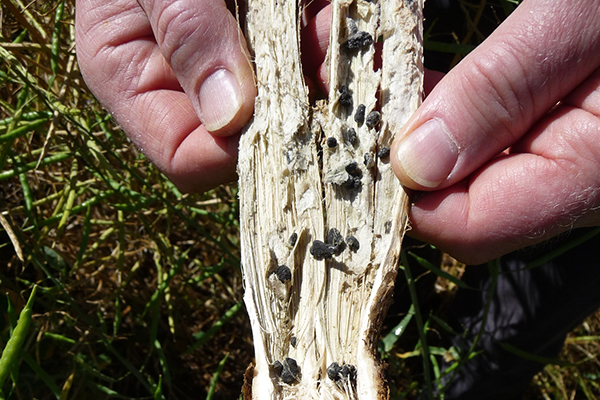
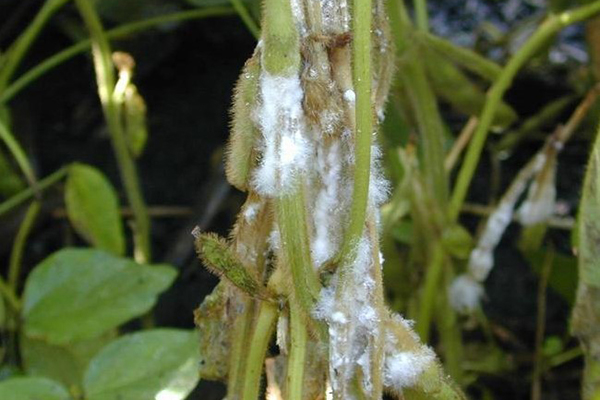

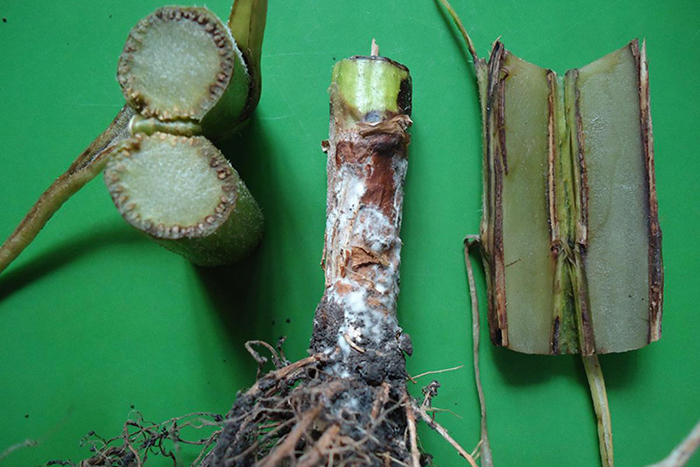
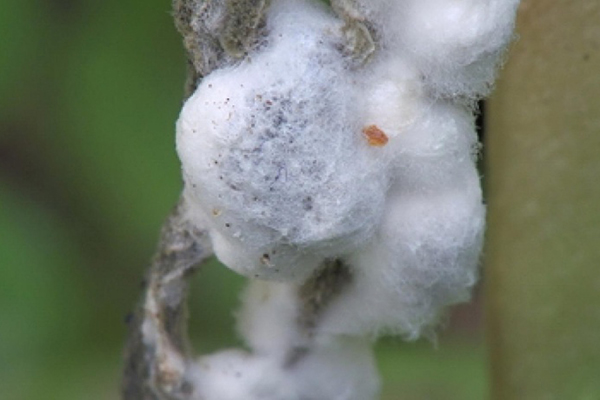
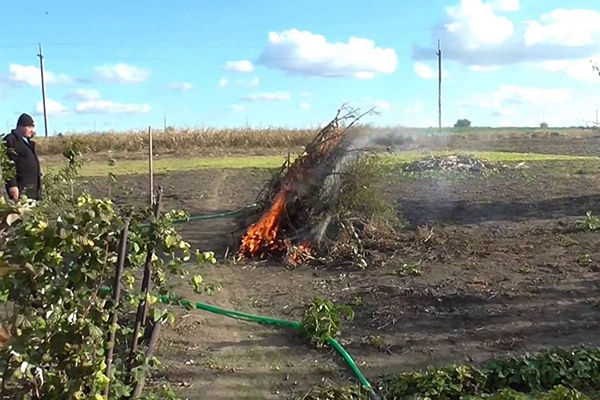
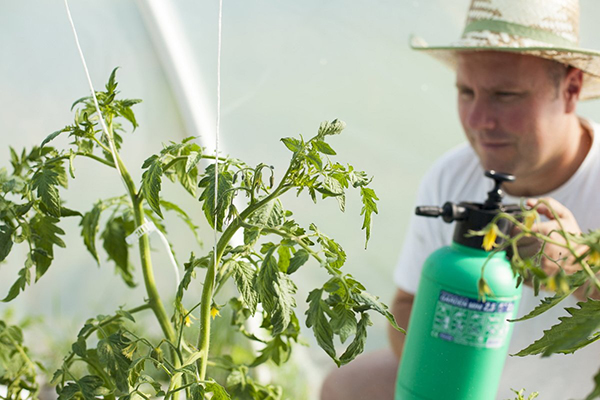

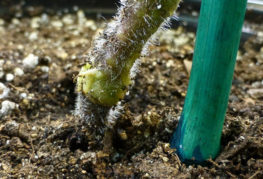


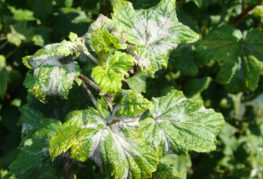
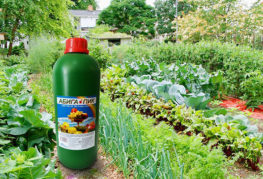
and will be published shortly.